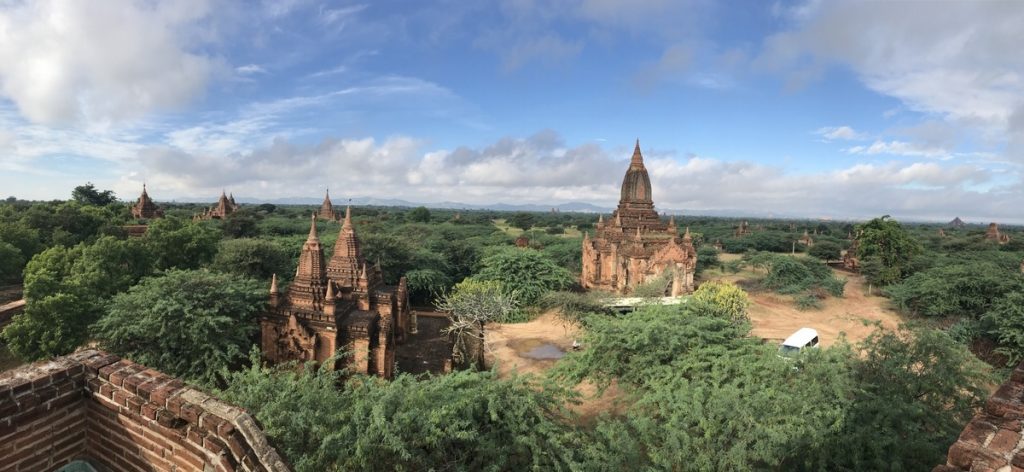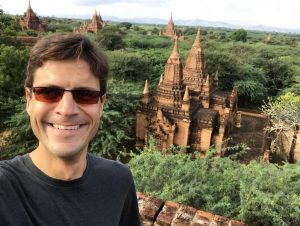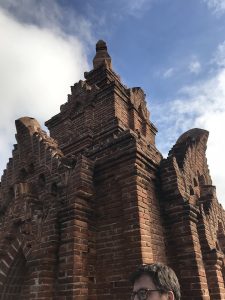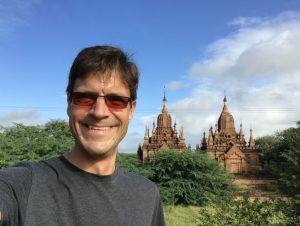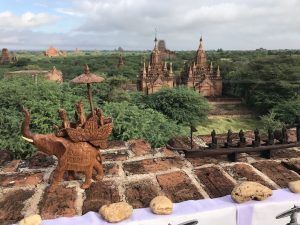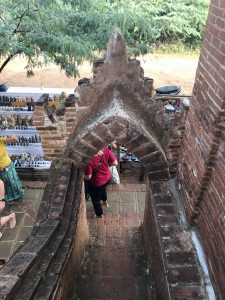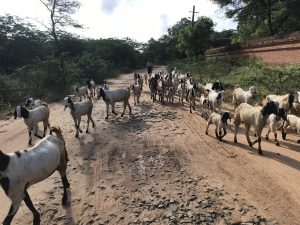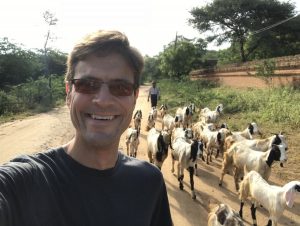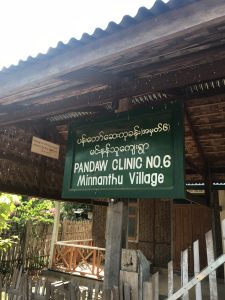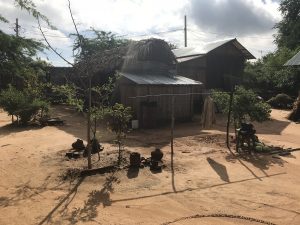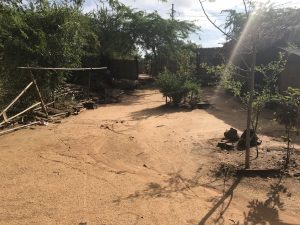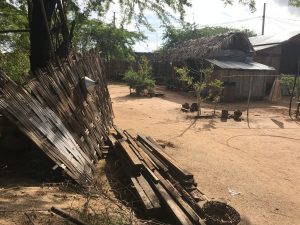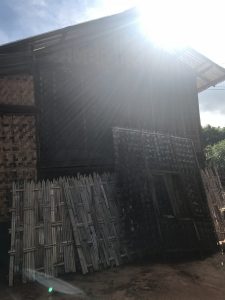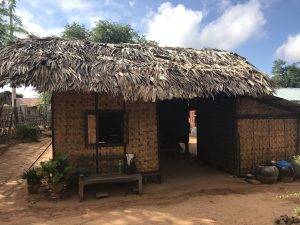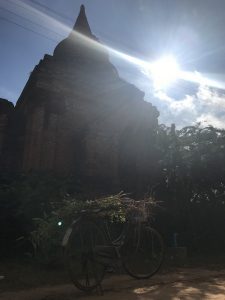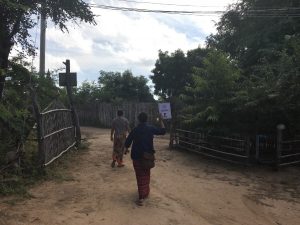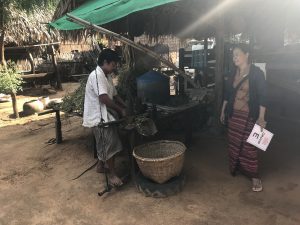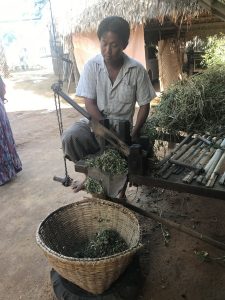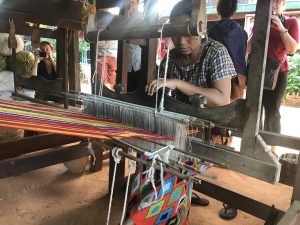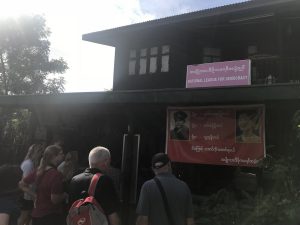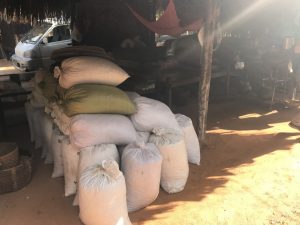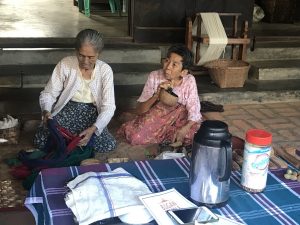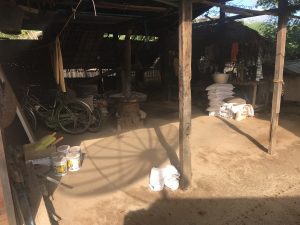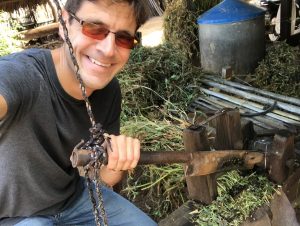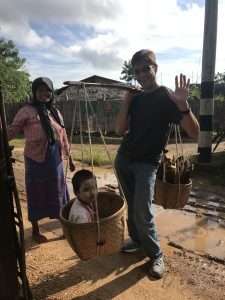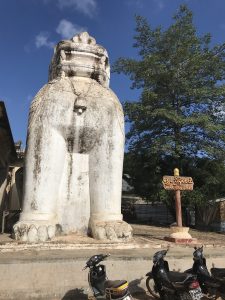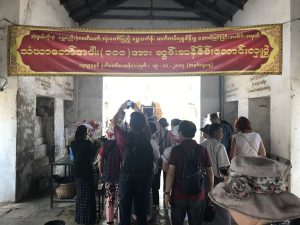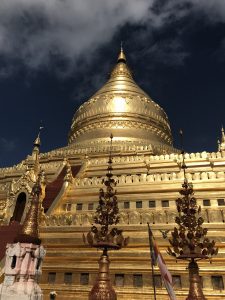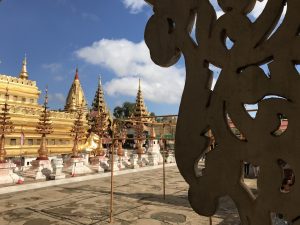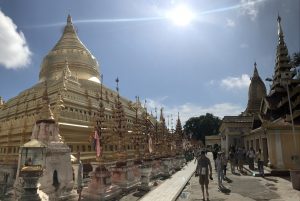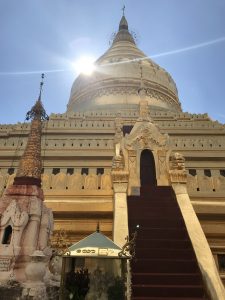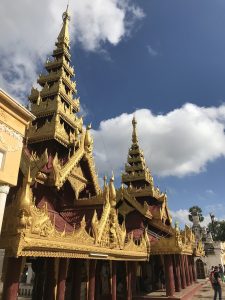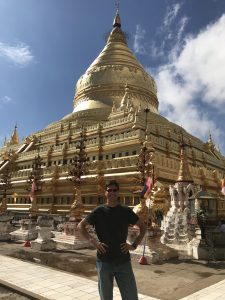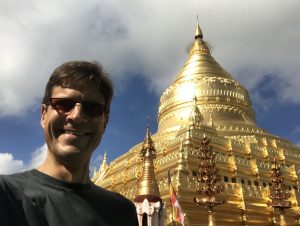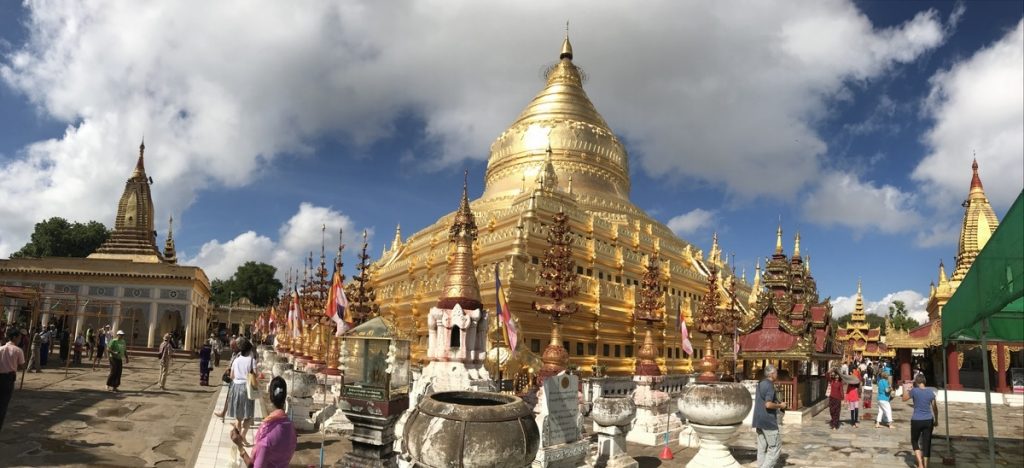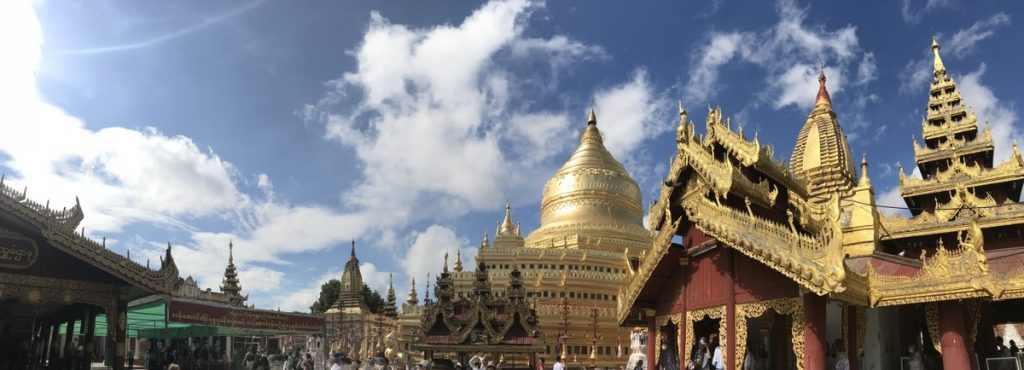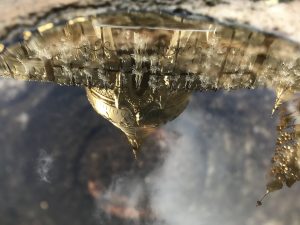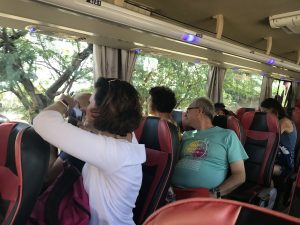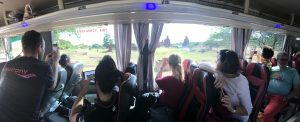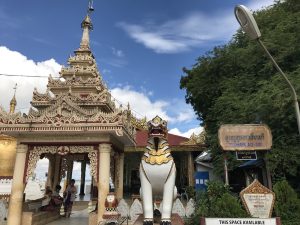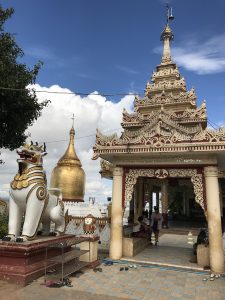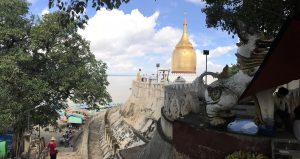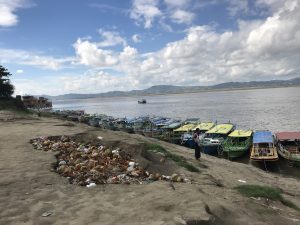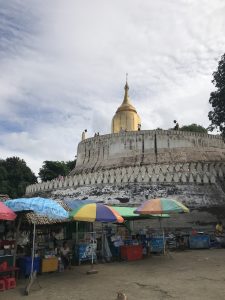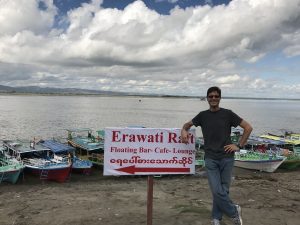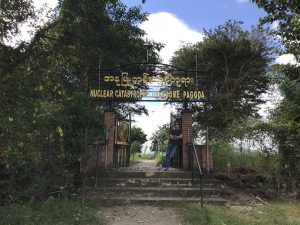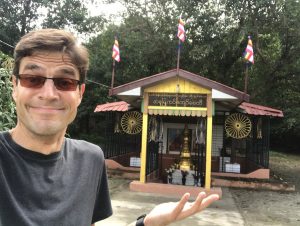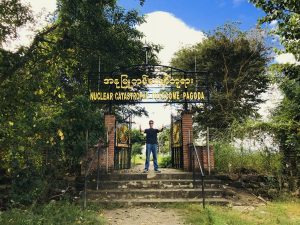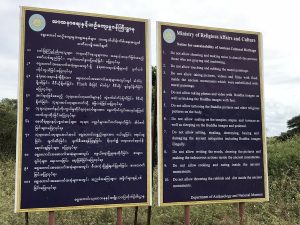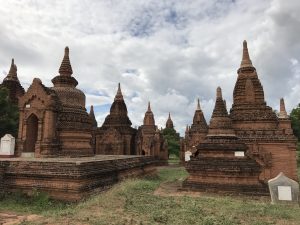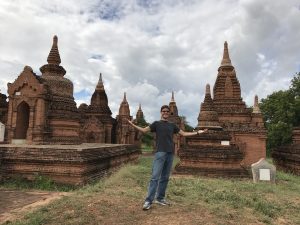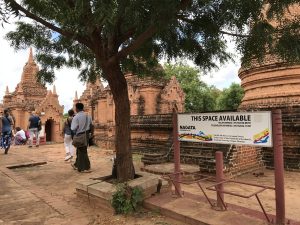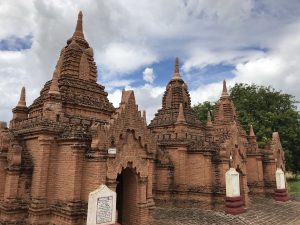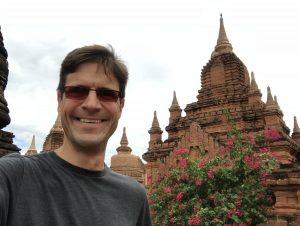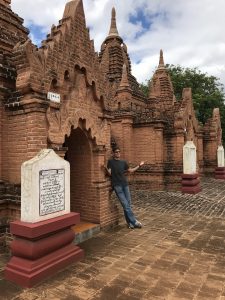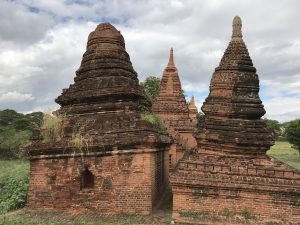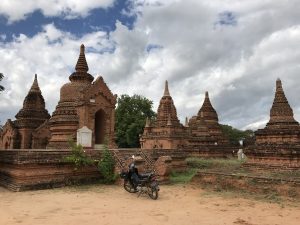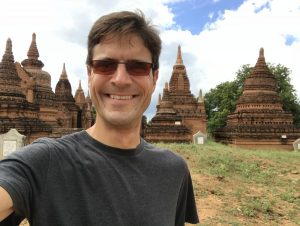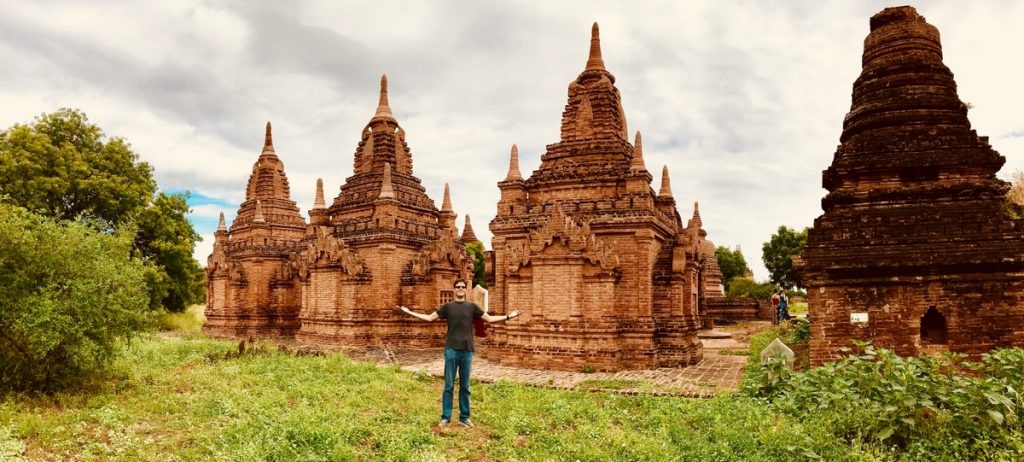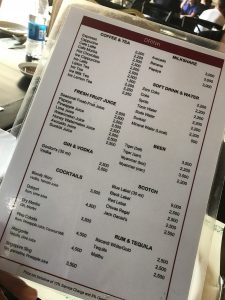It was a half-day tour today, with the promise of a pre-race pasta dinner and talk in the evening. But as it stands, the morning itinerary with Sheila and Thomas had us hitting five places before lunch.
Let’s start though with a bit of Bagan background:
Bagan is an archaeological wonderland, generally consisting of the two cities of Bagan and Now-un (best guess on the spelling for now). It’s got a dry climate (albeit this would NOT be true during our stay). Even during the rainiest years, they might see 20-24 inches of rain for the year. There ARE occasions for heavy rains and when that happens there’s always the threat of serious damage to the multitude of monuments and artifacts. Probably the worst rains coupled with earthquakes in 1975 to take the 10,000 monuments to closer to 4000 still being intact. A few more extreme rainy years have cut that figure to about 2000.
Tourism is the lifeblood of Bagan. Sure, there’s some peanut farming, sesame and beans too. But the main economic engine for the region is tourism. Without tourism, there definitely wouldn’t be enough jobs to sustain the locals and the place would be swallowed up by the desert. Thankfully, Bagan is hailed as one of the richest archaeological sites in Southeast Asia. The majority of the monuments and structures date from the golden age of 11th to 13th century Burma. It was around this time that the first Emperor of Burma introduced pure Buddhism to the land and Bagan served as the holy mecca.
In 1991, the military junta moved the locals who were residing and working in the archeological area to New Bagan and secured the 26 square miles of “Bagan” as a heritage site.
Preservation of natural land as well as historical and cultural artifacts is of course important. And imminent domain is a real thing. But the hairs on the back of my neck bristle when I think about a military junta “moving” people in relocation efforts. The US has done it, both reasonably well and incredibly poorly too. There’s something about the phrasing though of the word “junta” that… I just don’t know how to describe it.
Still, I’m just a visiting tourist here so I’ll do my best to stay out of the politics… at least for the moment.
***
Our first stop was the nearby Ochow Temple (not how it’s really spelled but how I phonetically tapped it out on my phone). This is a reconstructed monument and thus not Sheila’s favorite spot… but it DOES afford some pretty spectacular panoramic views of Bagan.
***
Next, we went to the Minnanthu Village (I knew how to spell it because I purporsefully took a photo of their local clinic).
Encompassing of 100 families, this place felt like a Hollywood backlot set for “southeast Asian village.” But this was no movie façade.
Predominately making their living as farmers, people here supplemented their income via various artisan home businesses, such as weaving and lacquerware. And much like Hollywood proper, they took part in the age-old tourism tradition of busking photo opps by posing for tips. Despite that, I still had a guilty sensation like we were traipsing through people’s homes and lives but it was clearly a business proposition for the locals.
After a couple of photos were snapped of a woman carrying her child, I offered her a dollar and she offered me the chance to carry her kid:
The kid weighs, um, 35 sticks?
***
From the village, we headed to the town of “Now-un” (again, this is the runkevinrun.com phonetic bastardization spelling so don’t go looking for this name on any map… just look for the adjacent town to New Bagan!). This is home to the Schwezagodo (??) Pagoda. This one I *did* google the spelling for after the fact – it’s Shwezigon Pagoda.
There’s a spot amongst this pagoda that reflected water affords a perfect shot of the stupa itself – a couple of local girls would help you frame your shot with your camera to capture the image:
***
During the day’s travels, Sheila would point things out from the bus. We couldn’t or wouldn’t stop, such as at the very popular pagoda for locals that is renowned for possessing the power to grant pilgrims’ wishes/desires; it’s ostensibly a smaller pagoda so most foreigners skip it in favor of the grander ones strewn amongst the 2000-4000 still standing monuments. And yet, part of me would have liked to visit that place. Because, ya know… wishes and desires…
But we did slow the bus at times to allow us paparazzi happy gawkers to snap photos from inside. I found it hilariously “touristy” and opted to take photos of all of us trying to take photos through the windows:
***
We also passed a few road construction elements and interestingly the road crews were almost entirely comprised of women. Sheila told us that’s because a lot of local men travel abroad to find work and send money back home; the women are left to take care of the children and households and thus take jobs closer to the family homestead. I made a note that it sounded akin to the American Rosie the Riveter stories from World War II. I also noted that Sheila said the women make a daily wage of 4000-5000 kyat while men construction workers take home 6000-8000 kyat. I asked if the women were upset about the wage discrepancy and if they were fighting for equal pay. Sheila said the women had slightly easier work; I disagreed but knew I was arguing from a weaker standpoint given the gender gap in pay is equally egregious in the USA. Still, I was upset to hear this.
***
Our fourth stop of the day was at Boo Pay Yah (umm… I think that’s right. It SOUNDS right… but it’s a butchered RKR phonetic). This features a prime example of the 2nd Century Pagoda style. Unfortunately, the original collapsed in 1975, a year that marked the worst natural disasters like floods and earthquakes. Burma therefore saw many archeological treasures damaged or destroyed. In the late 1980s, the military junta reconstructed this particular pagoda and it serves as a prime example of the ancient style.
Taking a stairway down, we were also afforded an opportunity to see the riverside.
Plus, just down the shore a bit (gosh… forgive me… that’s a poor phrasing…) there was an AMAZING pagoda listing that I was utterly fascinated by.
I’m still not 100% sure if this is a “non-proliferation, anti-nukes, world peace” pagoda or a “there’s been a spate of nuclear disasters and we’ve endured and will continue to endure” pagoda. Either way, when it comes to endurance, I’m for it.
***
The fifth and final tourist stop was actually my favorite… and also sadly the shortest. We had ten minutes to run wild through a patch of monuments that were indicative of all kinds of styles and constructions over the centuries. Some of the monuments were tilted/leaning due to the earthquakes; some were damaged; most though were in great shape and emblematic of just what I was hoping to see. It appears the 10K course for the races tomorrow runs through this section and I was secretly quite jealous they would have a bit more time to roam whilst running… yet I’m sure I’ll get to see some pretty spectacular things along my 42K run.
***
Before I close up this entry and prep for the marathon tomorrow, I need to make a confession. At lunch today I became “that guy,” the guy who loses his proverbial “shit” when in a foreign land and becomes the ugliest of tourists. I don’t know if it was the culmination of the Murphy’s Law morning I had, or if I was sick of being seated at a long table with a pole behind me and feeling like the serving team kept skipping me. But I do know when the bill came for my Coke Zero I was raging mad. You see, it was 2200 kyat, already a hugely inflated price given that I grabbed an 800 kyat can just a few hours prior along the riverside. And I recognized that at the bottom of the drink menu there was the caveat that all prices were subject to a 10% surcharge and 5% government tax.
So at the end of lunch, the server asked for 3000 kyat. And he asked everyone at the table for that same amount for their canned drinks (more if they had beer, a little less if they had local water). I balked and said the menu read 2200 and he said there was a tax on it. I shook my head in dismay and gave him a 5000 kyat note. He returned two one-thousand notes in change. Angry and upset, I skipped the fresh fruit dessert plate that looked a touch dodgy and skulked off to a bench to type out my thoughts.
Eventually I decided to see if I misread the menu. I walked into the bar and noticed most of the drink menus did NOT have the notation at the bottom regarding the taxes and fees. I finally found one and sure enough if was 10% and 5%. I’m a numbers guy. I made my living on budgets and financials there for quite some time and so running the numbers, a 2200 charge with 15% taxes would be 2550 kyat. I decided it was enough of a principle thing to take a stand so I stalked back into the dining room to ask the server. When I confronted him he fumbled out that he didn’t have change. That wasn’t the issue – the issue was he quoted from the get-go a price that doesn’t match the posted fees.
Not to go all Han Solo in The Force Awakens, but that’s not how math works. Twenty two hundred plus 15% is NOT 3000. It just isn’t. Sheila intervened, as did a few Albatros Tour Leaders and I finally backed off and apologized for my behavior. But they seemed to understand why I was upset, whether that was just lip service to help calm me down or sincere, I appreciate their managing me down from my crazed mania. I know I essentially threw a tantrum over 33 cents US but… I don’t know. It just really bugged me that the numbers were being treated so nonchalantly. And the fact that the tax was listed on only SOME of the menus made me further question the validity of the charges. I’m also a guy who believes in the Three Musketeers credo – all for one, one for all. I suppose Eden BBB would argue that they DID screw everyone equally… that is until I heard other tables were NOT charged the tax at all. And then I raged, raged against the futility of it all.
Sigh.
Sigh, sigh, sigh.
I apologize for creating an incident over 33 cents. It was not my finest hour. But I stand behind the principle that numbers must be treated fairly so that people may be treated fairly.
And while we’re at it, 4000-5000 kyat is NOT the same wage as 5000-6000 kyat. Equal pay for equal work.
Fight the power.

